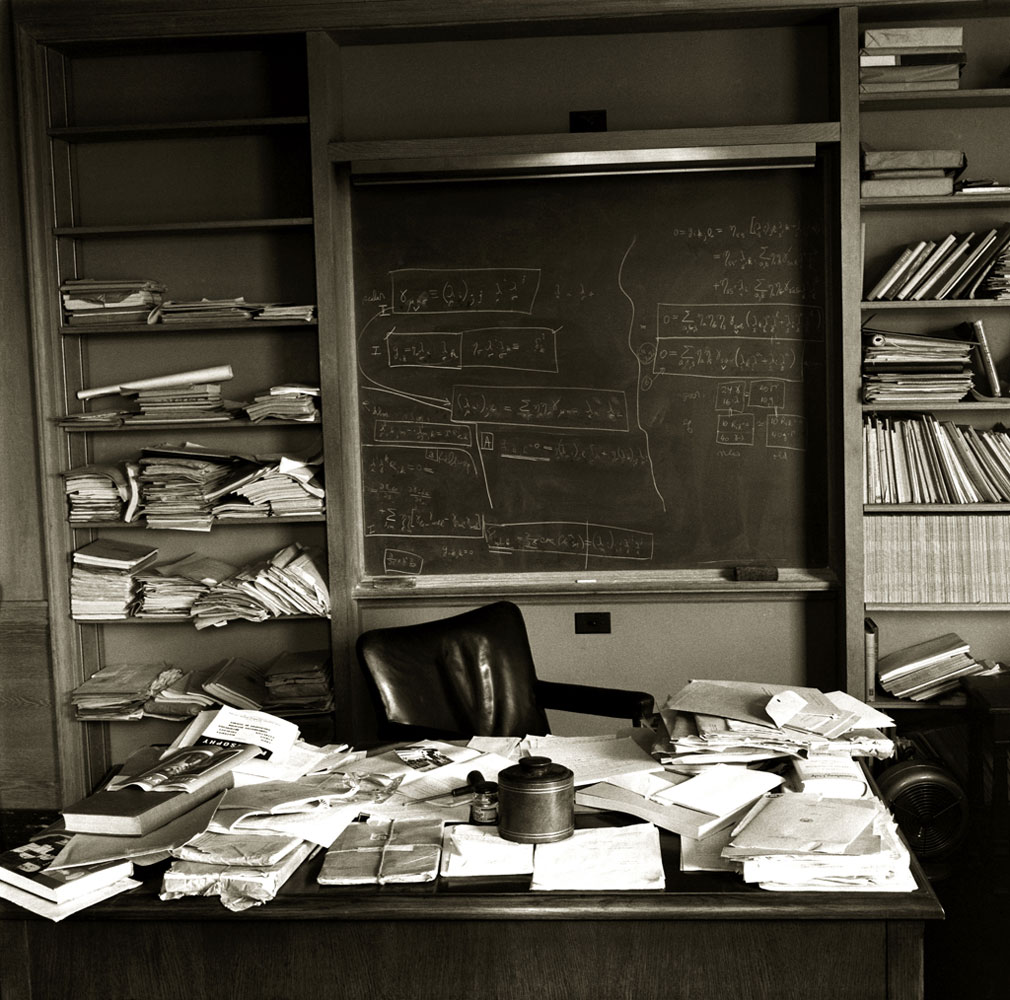
The death of a public figure of Albert Einstein’s stature is the sort of event that, literally and figuratively, stops the presses. No scientist has been more famous, no antiwar activist ever argued his case with more conviction, no exemplar of genius has ever been as frequently invoked (albeit in language often dripping with sarcasm: “Nice going, Einstein!”) than the German-born father of modern physics. So when word came on a Monday morning in April 1955 that Einstein had died, at age 76, at New Jersey’s Princeton Hospital, the victim of an aortic aneurysm, the scramble was on to recount the story of his life and, as urgently, his death.
LIFE photographer Ralph Morse was among scores of journalists who descended on Princeton, hoping to find and report on something, anything, that might offer insight into what Einstein’s passing meant to his friends, family and peers, as well as to countless strangers around the world who, for myriad reasons, felt a kinship with the man.
No one but Morse, however, finagled his way into Einstein’s office that day. No one but Morse came away with a photograph that, six decades later, serves as a haunting reflection of both the man and his life’s work: a seemingly simple picture of Einstein’s desk, cluttered with notebooks, journals, a pipe, a tobacco tin; behind the desk a blackboard covered with equations and formulas that, to the untrained eye, possess an almost runic power.
[Buy the TIME book, Albert Einstein: The Enduring Legacy of a Modern Genius]
The story of how Morse got the picture, meanwhile, is an object lesson in tenacity and a reminder of the invaluable skill of thinking on one’s feet.
After getting a call that April morning from a LIFE editor telling him that Einstein had died, Morse jumped into his car and sped from his house in northern New Jersey to Princeton.
“I headed to the hospital first,” Morse tells LIFE.com, “but it was chaos — journalists, photographers, onlookers. So I headed over to Einstein’s office [at the Institute for Advanced Study]. On the way, I stopped and bought a case of scotch. I knew people might be reluctant to talk but that they’re usually happy to accept a bottle of booze, rather than money, in exchange for their help. Anyway, I get to the building, find the superintendent, offer him a fifth of scotch and like that, he opens up the office.”
The rest, in a very real sense, is history. Morse took a few pictures in the office and more throughout the day as he tried (successfully, it turned out) to track down where Einstein’s funeral service was taking place. But ultimately it was the portrait of the desk, the chair, the bookshelves and the blackboard that resonated. LIFE magazine published the photograph above a headline that, one suspects, would have made the theoretical physicist himself smile: “His Fourth Dimension, Time, Overtakes Einstein.”
The empty chair by the formula-filled blackboard [LIFE wrote] looked as if the scholar who usually sat in it had merely stepped away, perhaps to gaze reflectively at the meadow which rolls past the Princeton Institute for Advanced Study. But the chair would not again be filled. Last week the entire world went into mourning for the greatest scientific thinker of his age. . . . For 50 years the world had been heaping honors on him, but Einstein remained indifferent to worldly glory. Dressing in baggy old clothes, he shut himself away in lonely contemplation of the massive intellectual problems he alone could solve. But he emerged to champion the ideals he cherished: justice, freedom, peace. He believed in his own form of “cosmic” religion. “I do not believe in the God of theology who rewards good and punishes evil,” he said. “The presence of a superior reasoning power, revealed in the incomprehensible universe, forms my idea of God.”
In Morse’s photo of Einstein’s comfortably disheveled desk, his burdened bookshelves, his soaring thoughts rendered on a blackboard in the universal language of mathematics, we glimpse both the essence and the solid, tangible shape of one of the 20th century’s signature lives: Here, the picture says, is where Einstein worked, dreamed, lived his singular, principled life to its fullest.
Few pictures have managed to convey, in one frame, so much about an imagination and intellect that traveled so far, for so long, in such rarefied realms.
[MORE: See the gallery, “The Day Einstein Died: A Photographer’s Story”]
Ben Cosgrove is the Editor of LIFE.com

More Must-Reads from TIME
- Donald Trump Is TIME's 2024 Person of the Year
- Why We Chose Trump as Person of the Year
- Is Intermittent Fasting Good or Bad for You?
- The 100 Must-Read Books of 2024
- The 20 Best Christmas TV Episodes
- Column: If Optimism Feels Ridiculous Now, Try Hope
- The Future of Climate Action Is Trade Policy
- Merle Bombardieri Is Helping People Make the Baby Decision
Contact us at letters@time.com